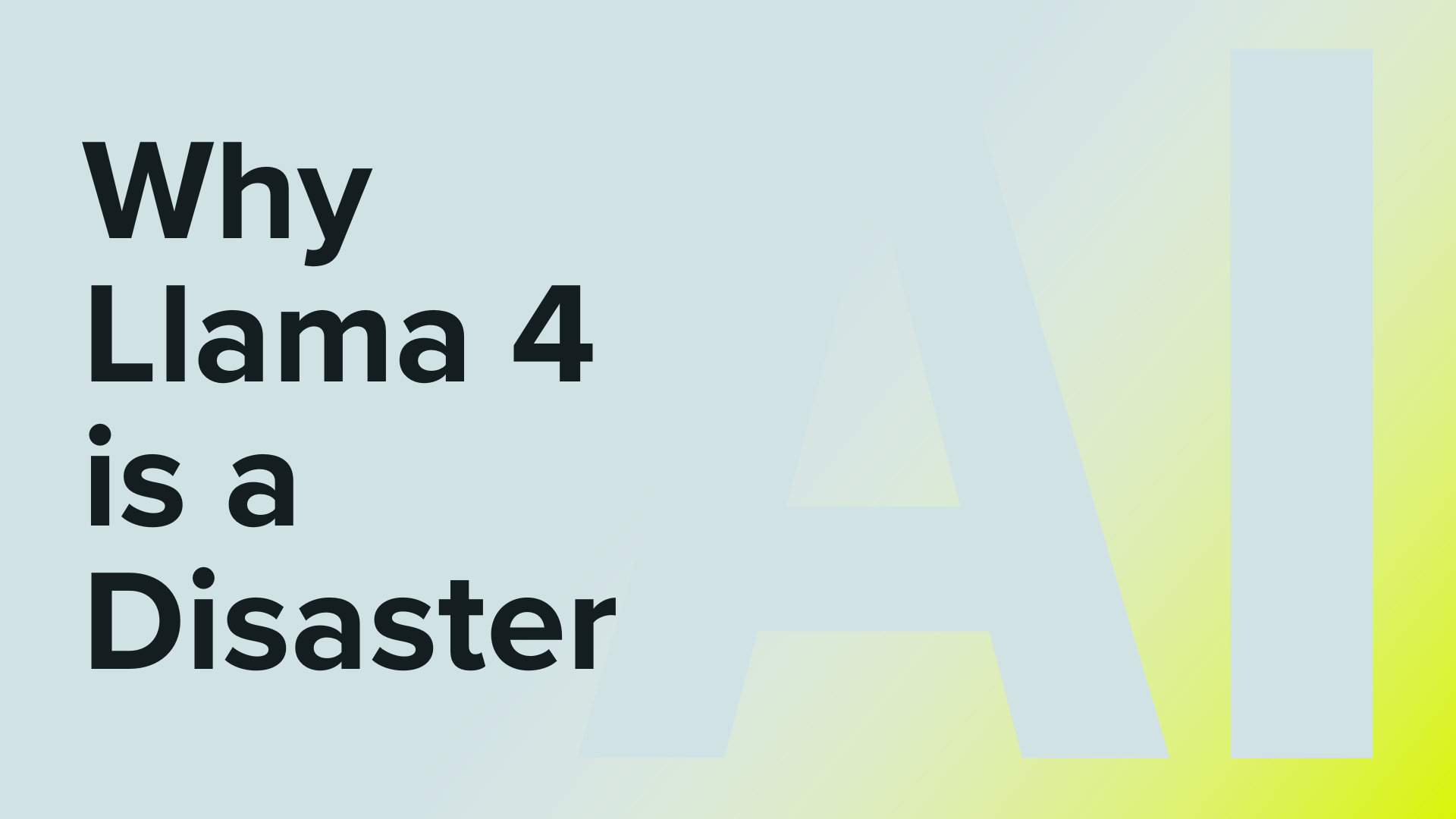Why Llama 4 is a Disaster

Meta’s Llama 4, the latest iteration in its series of large language models (LLMs), launched with considerable hype. Promising innovations like multimodal capabilities, massive context windows, and enhanced multilingual understanding, it was touted as a game-changer in the AI industry.
But despite these lofty ambitions, Llama 4 has faced sharp criticism for its poor reasoning, inconsistent coding performance, ethical controversies, and rushed development cycle.
Overview of Llama 4
Llama 4 comprises three distinct models:
- Scout: Features a staggering 10-million-token context window.
- Maverick: A general-purpose model positioned to rival GPT-4o and DeepSeek R1.
- Behemoth: Still in development, intended as a high-capacity "teacher" model.
It introduces the Mixture-of-Experts (MoE) architecture, designed to activate only the relevant components for a given task—boosting efficiency without compromising performance.
Strengths of Llama 4
While the criticisms are valid, it's important to acknowledge what Llama 4 gets right:
- Extended Context Window: Scout’s ability to handle up to 10 million tokens enables in-depth analysis of large documents or datasets.
- Multimodal Capabilities: Llama 4 processes text, images, audio, and video—making it a versatile tool across domains.
- Multilingual Fluency: Trained on trillions of tokens across 200+ languages, it performs well in translation and multilingual content generation.
- Open-Weight Availability: Meta has continued its practice of releasing open-weight models to promote transparency and community collaboration.
Why Llama 4 Falls Short
Despite its potential, Llama 4 falls significantly behind expectations in several key areas:
1. Poor Reasoning Capabilities
Llama 4 has shown a lackluster ability to perform logical reasoning. Competing models like GPT-4o and DeepSeek R1 demonstrate consistent performance in abstract thinking and multi-step problem solving, where Llama 4 fails.
The Maverick variant can engage in nuanced discussions but still underperforms in tasks requiring precision and logical coherence.
2. Inconsistent Coding Performance
Although marketed as developer-friendly, Llama 4's coding ability is inconsistent. It handles simple tasks but struggles with complex or domain-specific problems.
On the Ader Polyglot benchmark, a rigorous coding evaluation, it scored just 16%, falling far behind more specialized models like Quinn 2.5 Coder. This makes it unreliable for professional software development.
3. Ethical Concerns
Reports suggest that Llama 4 was rushed to market under investor pressure, compromising both quality and ethics. Key employees resigned due to concerns over the sourcing of training data and lack of transparency in its development. These issues have sparked serious concerns across the AI community.
4. Rushed Development Cycle
Insiders have described a development environment marred by tight deadlines and internal discord. The lack of proper QA, testing, and refinement has led to an underwhelming release that many consider unfinished.
5. Unmet Expectations
In comparison to OpenAI’s GPT-4 Turbo or Google’s Gemini, Llama 4 doesn’t deliver. It lags in areas like creativity, reasoning accuracy, and adaptability—disappointing users who were expecting a leap forward.
Technical Limitations
Beyond its developmental shortcomings, Llama 4 also suffers from core technical issues:
- Logical Inconsistencies: Despite ethical reasoning strengths, it often produces contradictory or nonsensical outputs in complex tasks.
- Platform Dependence: Performance fluctuates depending on the hosting platform, reducing its viability in production environments.
- High Resource Demand: The MoE architecture, while scalable, requires significant computational power, limiting access for smaller teams and independent developers.
Comparison with Competitors
| Feature | Llama 4 | GPT-4 Turbo | DeepSeek R1 |
|---|---|---|---|
| Reasoning Capabilities | Weak | Strong | Strong |
| Coding Performance | Inconsistent | Reliable | Reliable |
| Multimodal Support | Yes | Yes | Limited |
| Context Window | Up to 10M tokens | Millions of tokens | Moderate |
| Ethical Concerns | High | Low | Low |
This comparison underscores how Llama 4 underperforms relative to leading alternatives.
User Feedback
Initial user reactions have been mixed to negative:
- On platforms like Reddit and Twitter, users complain about the model’s real-world application failures.
- Developers cite unreliable coding results, making it unsuitable for technical workflows.
- Researchers appreciate its multilingual capabilities but critique its lack of logical consistency and depth.
Implications for Meta
The fallout from Llama 4’s rocky launch presents major challenges:
- Reputation Damage: Ethical lapses and poor performance have affected Meta’s credibility in AI circles.
- Increased Competition: With OpenAI and Google surging ahead, Meta risks falling further behind.
- Investor Disillusionment: The rushed release may erode investor confidence in Meta’s AI roadmap.
Conclusion
Llama 4 introduces noteworthy features—such as multimodal capabilities and a groundbreaking context window—but ultimately falls short due to poor reasoning, coding inconsistencies, ethical missteps, and a rushed release.
For Meta to regain trust and relevance in the AI space, it must prioritize rigorous testing, transparent development, and meaningful improvements in its future LLMs.